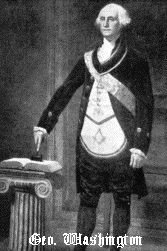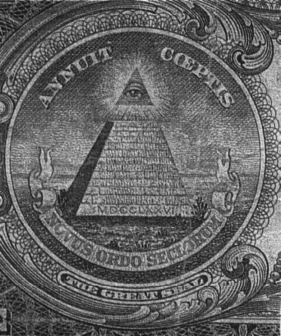 History of Freemasonry
Although Freemasonry officially traces its beginning from the year 1717 it was in existence prior to this. A pamphlet entitled 'To All Godly People in the City of London' was distributed in 1698, where it urged its readers to..
Stephensons 'Origins of Freemasonry' mentions 'Pre 1710 Masonic Lodges in Scotland with the date of their First Recorded Mention.
He was initiated into the Fredericksburg Masonic Lodge five months before his twenty-first birthday on Friday 4 November 1752. As his mother Lodge met on the first Friday of the month, he was passed to the Second Degree on 3 March 1753 and raised to the 'sublime degree' of a Master Mason on 4 August 1753 in the same Lodge. At the time of his initiation he had just completed surveying the Virginian estates of Lord Fairfax, whose forebear had introduced Oliver Cromwell to Freemasonry. The Fairfax family were very active Freemasons in the Grand Lodge of York and his elder brother Lawrence, with whom George was living at the time, had been educated in England and was married to Lord Fairfax's niece. The Lodge that Washington attended probably followed an ad hoc 'York Rite' Lodge rather than a 'Scottish Rite', but six years after his initiation, in 1758, Fredericksburg Lodge received a Charter from Scottish Grand Lodge which formalised its position. When Washington was made First President of the United States of America he had been a member of the Craft for almost thirty-six years and was at the time a member of the Alexandria Lodge, No. 22. On September 18, 1793, President Washington officiated at the laying of the cornerstone for the United States Capitol building. It was a major event in the creation and development of the federal city, a project very dear to the heart of George Washington. It was also what the Masonic Fraternity refers to as one of the most memorable days in the life of George Washington, in the life of Freemasonry, and in the life of the United States. Washington, dressed in Masonic regalia, lead a procession of officers and brethren of the Masonic Fraternity from Maryland and Virginia to the site in the District of Columbia. Upon arrival, the music stopped playing, the drums stopped beating, the flags were anchored, and the artillery fired a volley. A large silver plate was handed to President Washington. Using a small trowel with silver blade and ivory handle, Washington deposited the plate and laid it on the corner-stone. A prayer followed. Then there were heard Masonic chanting honors and then a 15-volley from the artillery. According to a newspaper's eyewitness account, when the proceedings ended 'The whole company retired to an extensive booth, where an ox of 500 pounds weight was barbecued . . . Before dark the whole company departed with joyful hopes of the production of their labor.' The apron and sash worn by George Washington together with the trowel he used are today preserved in the Alexandria- Washington Masonic Lodge. George Washington, a member of the Masons since 1752, the Master Mason, the Past Master, the President of the United States had personally participated in the laying of the U.S. Capitol's cornerstone. He did so 'as a Freemason and President,' wrote Allen E. Roberts in G. Washington: Master Mason. The Architect of the Capitol Home Page also documents that "The cornerstone [of the Capitol] was laid by President Washington in the building's southeast corner on September 18, 1793, with Masonic ceremonies." And in a more recent Masonic ceremony in Washington, D.C., 33º Freemason Senator Strom Thurmond (R-SC) and fellow Masons honor the laying of the cornerstone 200 years ago. (see photo) That same year the dollar was adopted as the unit of currency for the United States of America. the synbol for the dollar is an 'S' with a double vertical strike-through, although in print it usually appears today with a single vertical line. The 'S' was borrowed from an old spanish coin but the two vertical lines were the Nasorean pillars of 'Mishpat' and 'Tsedeq' better known to the Masonic founders of the United States as 'Boaz' and 'Jachim', the pillars of the porchway to King Solomon's Temple. Extract from 'The Hiram key' by Christopher Knight & Robert Lomas
' - the early Masons were believed to be a resurrection of the old Rosicrucian Order..' [see here for more details on this claim]
|
||||||||||||||||||||||||||||||||||||||||||||||||||||||||||||||||||||||||||||||||||||||||||

